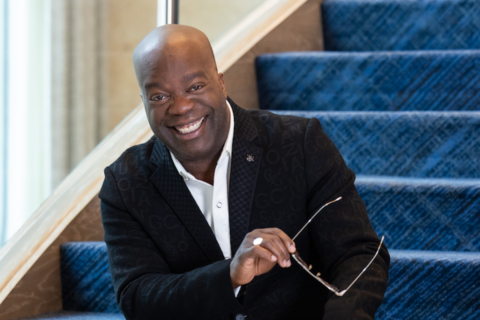Maybe it’s the word “retreat” itself. According to Merriam-Webster, the first definition of the noun “retreat” is: “movement by soldiers away from an enemy because the enemy is winning or has won a battle.” Only secondary definitions refer to it as a place of privacy and safety.
No wonder your team may flinch at the thought of an off-site “retreat”. It has become so off-putting that companies have spoofed the concept of corporate retreats in ads, such as this one by American Airlines.
But retreats can boost team collaboration, creativity, and be “a fabulous way for entrepreneurs to pop the bubble they may find themselves in,” says Beth Buelow, founder of coaching company The Introvert Entrepreneur. For instance, we host two annual retreats a year.
Here’s an inside look at four reasons why our staff (and I) look forward to them.
The agenda is fluid and collaborative.
Our culture, like many, is built and staffed by millennials and runs on collaborative leadership, a style of leadership that is “anti top-down.” Roles and responsibilities fluctuate and evolve, rather than stay stringently static.
Retreats and company off-sites are an ideal situation to introduce or further a collaborative leadership style, allowing more junior level employees a chance to lead a section of the day. Plus, I’m pretty sure no one wants to hear me talk for seven hours straight. So as the founder, I get a chance to learn the leadership styles of others and how colleagues respond.
We measure the impact.
Many retreats end with the Monday-morning problem: when you return to the office, forget about the retreat, and carry on with business as usual, according to HR Advisor. How do you know if your retreat even mattered? We find out immediately by doing an organizational checkup, as recommended in Gino Wickman’s book “Traction,” right before the retreat and upon wrap up.
The checkup is a quick 20-question assessment any staff member can answer. I hope for increased scores after a day and a half of reviewing goals, issues, mandates and so forth. But the numbers objectively justify wishful perceptions. In our last retreat, the scores showed that our off-site increased our organizational checkup score by 14 percent, a hard number that shows by merely outlining and discussing our business, we created a healthier company culture.
We reflect on what was learned.
A Harvard Business School study found the link between learning-by-thinking and greater performance is explained by a personal evaluation of one’s capabilities to organize and execute actions to obtain designated goals. Said differently, in the words of American philosopher John Dewey, “We do not learn from experience … we learn from reflecting on experience.”
Every retreat, we have a discussion about what we individually and collectively learned in the past six months. Everyone is asked to prepare their learned lessons beforehand, which makes for a double dose of reflection before and during the retreat.
We plan for unplanned time.
Google is now famous for its 20-percent rule, which allows employees to use one-fifth of their time freely. What Google knows, unsurprisingly for the company ranked best in the U.S. to work at, is that free time boosts creativity. Employees know this as well.
Studies suggest 51 percent of respondents think it’s necessary to have free time to be creative. During our retreats, we purposely put “free time” on the agenda. Not only is the unscripted time relief from a rigid schedule, but it also yields fresh thoughts and ideas that get shared later on.
This article has been edited and condensed.
Beck Bamberger founded BAM Communications in 2007 and has since founded three other businesses, Bite San Diego, Nosh Las Vegas and Pangea Pal. In 2011, she won an Emmy for on-camera hosting in a talk show format for her show, Next 500. She is currently a board member of Gen-Next, a marketing domain expert with CONNECT’s SDSI organization and a Big Sister with Big Brothers Big Sisters. Connect with @bamcomm on Twitter.
© YFS Magazine. All Rights Reserved. Copying prohibited. All material is protected by U.S. and international copyright laws. Unauthorized reproduction or distribution of this material is prohibited. Sharing of this material under Attribution-NonCommercial-NoDerivatives 4.0 International terms, listed here, is permitted.









